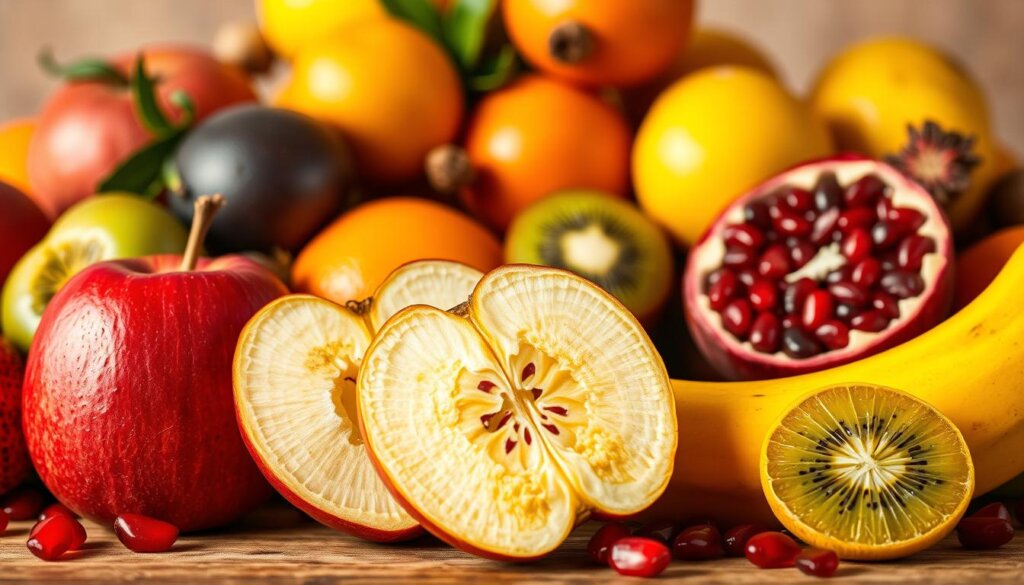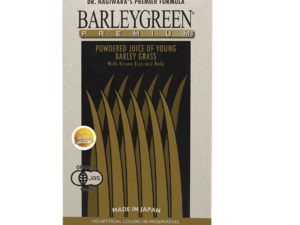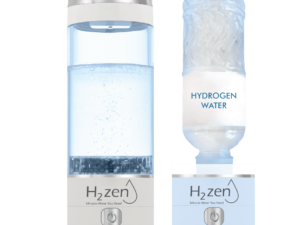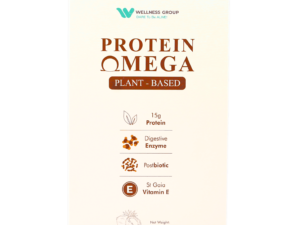Would you believe these two popular fruits differ by just 0.2 grams of fiber per 100g serving? Despite their nearly identical fiber quantities, their nutritional impacts vary in ways that could reshape your dietary choices.
Both fruits deliver essential nutrients that support digestion and overall wellness. But the type of fiber they contain matters more than the numbers suggest. Soluble and insoluble varieties play distinct roles in gut health, blood sugar regulation, and nutrient absorption.
Recent studies highlight how specific fiber properties influence digestive enzyme production, affecting everything from energy levels to immune function. This makes choosing between them less about “better or worse” and more about aligning with personal health objectives.
For Malaysian readers balancing busy lifestyles, understanding these differences becomes vital. Tropical climates favor banana growth, while apples remain imported staples—yet both hold valuable places in local diets. Wellness Group’s nutrition experts emphasize that optimal fiber intake depends on individual needs, from managing weight to improving gut diversity.
Key Takeaways
- Apples and bananas provide nearly equal fiber quantities per serving
- Fiber composition differs significantly between the two fruits
- Soluble vs. insoluble varieties affect digestion uniquely
- Climate and availability influence dietary choices in Malaysia
- Personal health goals determine which fruit offers better benefits
- Expert guidance helps optimize fiber intake for wellness
Introduction to Fruit Fibers

Click to LEARN MORE
The secret behind a balanced diet often lies in the fibers found in everyday fruits. These natural compounds work like tiny scrub brushes for your digestive system, keeping things moving smoothly while nourishing gut bacteria. Wellness Group’s nutrition experts emphasize that not all fibers function the same—their unique properties determine how they benefit your body.
Fruits deliver two main fiber types: soluble and insoluble. Soluble varieties dissolve in water, forming a gel that slows digestion and stabilizes blood sugar. Insoluble fibers add bulk to stool, preventing constipation and promoting regularity. Together, they create a powerful team for maintaining digestive health.
Why choose whole fruits over supplements? Natural sources provide vitamins, minerals, and antioxidants that synthetic options lack. The fiber content in fresh produce works synergistically with these nutrients, enhancing their absorption and effectiveness. For Malaysians juggling hectic schedules, incorporating fiber-rich foods like local tropical fruits offers practical nutritional advantages.
Regular intake supports weight management by increasing feelings of fullness after meals. It also helps regulate cholesterol levels and reduces inflammation—key factors in preventing chronic diseases. As Wellness Group advises, “Think of fruit fibers as nature’s multitaskers—they do more than just keep you regular.”
Overview of Apple and Banana Fibers
Beneath similar fiber counts lie crucial differences in hydration and energy delivery. A 100g serving of apples contains 85.56g water content, making them ideal for light snacks that keep you hydrated. Their lower calorie count (52 kcal) pairs well with active lifestyles, while bananas pack 89 kcal per serving—perfect for quick energy boosts.

These fruits approach fiber differently. Apples contain pectin, a soluble fiber that slows sugar absorption and supports gut health. Bananas develop resistant starch as they ripen, which acts like insoluble fiber to aid digestion. Natural sugars in both interact uniquely with their fiber content—apples’ fructose releases gradually, while bananas’ glucose provides faster fuel.
Wellness Group’s nutritionists note how water-rich options enhance meal satisfaction. “Higher water content means more volume without extra calories,” they explain. This makes apples popular for weight management, whereas bananas’ dense nutrients suit athletes or busy professionals needing sustained energy.
Here’s what matters most:
- Hydration vs. calorie density: Choose based on activity levels
- Fiber types: Pectin stabilizes, resistant starch cleanses
- Sugar timing: Immediate energy or steady release
For Malaysians juggling tropical heat and hectic schedules, both fruits offer practical benefits. Pair chilled apple slices with afternoon tea, or grab a banana before rush-hour commutes. The right choice depends on whether you prioritize refreshment or fuel.
apple fiber better than banana fiber: Debating the Benefits
When comparing fruits for blood sugar control, numbers tell an interesting story. The glycemic index reveals apples score 38 versus bananas at 51—a difference that shapes how each affects energy levels. Lower values mean slower glucose release, making one option preferable for maintaining stable blood sugar throughout busy days.
Bananas counterbalance this with higher vitamin B6 and potassium content. These nutrients support nerve function and muscle recovery—key for active Malaysians. However, apples deliver polyphenols that enhance how our bodies process soluble fiber, creating a unique effect on gut health.
Consider these factors when choosing:
- Immediate energy needs vs. sustained fuel
- Individual insulin sensitivity
- Combination with other foods in meals
Wellness Group’s dietitians emphasize context: “A banana before workouts prevents crashes, while apple slices paired with nuts make ideal afternoon snacks for steady sugar levels.” Neither fruit universally outshines the other—your diet goals determine the smarter pick.
For those managing metabolic concerns, the lower glycemic option often aligns better with a balanced diet. Yet active individuals might prioritize bananas’ rapid energy boost. Regular consultations with nutrition experts help Malaysians navigate these nuances effectively.
Detailed Nutritional Comparison

Click to LEARN MORE
Nutrition labels tell only part of the story when comparing these tropical diet staples. While both deliver essential nutrients, their nutritional value diverges in ways that impact energy management and long-term wellness.
Caloric Content and Glycemic Index
A 100g serving contains 52 calories for one fruit versus 89 for the other—a difference that matters for weight-conscious snackers. The lower-calorie option pairs well with active lifestyles, while the energy-dense choice suits those needing quick fuel.
Glycemic index values reveal another layer. With scores of 38 vs. 51, these fruits affect blood sugar levels differently. The lower-GI option helps maintain stable sugar levels, particularly beneficial for metabolic health management.
Macronutrient and Micronutrient Profiles
Protein content varies significantly—1.09g vs. 0.26g per serving—making one fruit better for muscle recovery. Mineral comparisons show striking contrasts:
- Potassium: 358mg vs. 107mg
- Magnesium: 27mg vs. 5mg
- Vitamin C: 8.7mg vs. 4.6mg
The vitamin K champion provides 2.2µg versus 0.5µg, supporting bone health. Wellness Group experts note: “These differences create complementary roles in diets—neither outshines the other universally.”
For Malaysians managing heart health, the potassium-rich option supports blood pressure regulation, while the vitamin K source aids circulation. Active individuals might prioritize the magnesium-loaded fruit for workout recovery.
Fiber Content and Digestive Health Benefits
The battle for digestive supremacy begins at the cellular level. Though separated by just 0.2g per 100g serving, these fruits wield their fibers differently. One thrives on soluble gel-forming compounds, while the other adapts its starch content through ripening stages.
Pectin—the soluble champion in crisp fruits—creates a protective gel within the digestive system. This viscous substance slows sugar absorption, helping maintain stable blood levels after meals. Wellness Group experts note: “This mechanism proves particularly valuable for those managing energy crashes during hectic workdays.”
Unripe tropical counterparts pack resistant starch that behaves like insoluble fiber. As these yellow foods mature, this starch converts to natural sugars while retaining standard fiber quantities. The resistant variety serves as fuel for beneficial gut bacteria, enhancing microbiome diversity crucial for nutrient processing.
Key digestive advantages include:
- Acid buffering from soluble fibers protecting sensitive stomach linings
- Prebiotic effects supporting colonies of beneficial microorganisms
- Enhanced cellular regeneration along intestinal walls
Wellness Group’s research reveals how these fibers complement different needs. Active professionals might prefer the immediate energy from ripe options, while those seeking sustained nourishment could opt for starch-rich unripe varieties. Choosing becomes less about superiority and more about aligning with personal digestive rhythms.
Vitamins, Minerals, and Antioxidants in Each Fiber
Hidden within every bite of fruit lies a powerhouse of micronutrients that amplify fiber’s benefits. Wellness Group’s research reveals how vitamins and minerals team up with dietary components to create health advantages greater than their individual parts.

Key Vitamins and Their Roles
The tropical yellow favorite packs 40% more vitamin C than its crunchy counterpart—8.7mg per 100g. This antioxidant strengthens immunity and helps build collagen for supple skin. It also aids muscle repair, making it ideal for gym enthusiasts.
In contrast, the crisp fruit delivers vitamin K—crucial for bone density and wound healing. Just one serving provides 2.2mcg, supporting cardiovascular health through improved blood flow regulation.
- Magnesium content: 27mg in golden fruits aids nerve function and stress management
- Antioxidant properties: Quercetin in red-skinned varieties protects brain cells
- Skin support: Vitamin A in both fruits maintains tissue elasticity
Wellness Group experts explain: “These nutrients work like a symphony—magnesium helps your body use vitamin B6 effectively, while antioxidants boost vitamin C’s protective effects.” Active Malaysians benefit from this synergy, whether recovering from workouts or managing hectic schedules.
The potassium-rich option contains 360mg per serving—three times more than its competitor. This mineral helps muscles contract smoothly, preventing cramps during tropical heat. Pairing these fruits with nuts or yogurt maximizes nutrient absorption, turning snacks into wellness powerhouses.
Health Impacts on Weight Management and Disease Prevention
The true power of dietary fibers shines in their ability to shield against chronic conditions. Wellness Group’s research reveals how specific fruit components influence long-term wellness outcomes through metabolic and cellular pathways.
Blood Sugar, Cholesterol, and Inflammation
Soluble fibers excel at managing blood sugar levels by slowing glucose absorption. Studies show certain varieties reduce post-meal spikes by 30%, aiding sustainable weight management. This mechanism proves vital for preventing insulin resistance.
Distinct fiber types impact cholesterol differently. Gel-forming compounds bind to LDL particles, flushing them from the bloodstream. Wellness Group notes: “Regular intake of these fibers can lower harmful cholesterol by 15% in high-risk groups.”
| Health Aspect | Fiber Type A | Fiber Type B |
|---|---|---|
| Cancer Risk Reduction | Breast, lung, colorectal | N/A |
| Cardiovascular Protection | LDL reduction | Blood pressure support |
| Blood Sugar Control | Slow glucose release | Enzyme inhibition |
| Antioxidant Capacity | High polyphenols | Vitamin C synergy |
Protective Effects and Antioxidant Benefits
Natural compounds in fibrous fruits combat oxidative stress at the cellular level. Anti-inflammatory properties help neutralize free radicals linked to chronic diseases. One variety contains quercetin—shown to protect cells from DNA damage.
Wellness Group emphasizes combining both fiber sources: “Their antioxidant profiles work together like nature’s security team—some prevent damage, while others repair existing issues.” This synergy supports healthy aging and reduces disease risks.
For Malaysians balancing modern lifestyles, choosing fibers becomes strategic. Those prioritizing blood sugar stability might lean toward slow-release options, while others focus on heart-protective benefits. Regular consultations help tailor intake to personal health goals.
Practical Uses of Apple and Banana Fibers in Daily Nutrition
Unlocking the full potential of fruits requires knowing when and how to enjoy them. Wellness Group’s nutritionists suggest starting mornings with crisp slices added to oatmeal or blended into smoothies. This timing leverages their steady energy release, helping maintain focus during busy work hours.
For active Malaysians, the tropical favorite shines as a pre-workout snack. Its natural sugars provide quick fuel, while the starch content supports muscle recovery. Pair it with nut butter to slow sugar absorption—ideal for gym sessions or outdoor activities.
Both foods adapt beautifully to local diets. Try baked cinnamon-dusted rings as afternoon treats or mix diced pieces into yogurt parfaits. Savory applications work too—add green varieties to salads for crunch or blend ripe ones into curry bases.
Wellness Group emphasizes balance: “Rotate between both to cover all nutritional bases.” Combine them with protein sources like lentils or eggs for meals that satisfy hunger and support digestion. This approach creates a balanced diet that aligns with Malaysia’s vibrant food culture.
Remember—the number of servings matters less than strategic pairing. Consult experts to tailor intake for your lifestyle, whether managing weight or training for marathons. Smart choices turn everyday food into powerful wellness tools.
FAQ
How do apple and banana fibers impact blood sugar regulation?
Apple fiber contains soluble fiber like pectin, which slows glucose absorption, supporting steadier blood sugar levels. Banana fiber includes resistant starch, which may improve insulin sensitivity over time. Both help manage glycemic responses but work differently in the body.
Which fruit fiber offers more vitamins for immune support?
Banana fiber provides higher vitamin B6, crucial for metabolic health and nerve function. Apple fiber delivers more vitamin C, an antioxidant that boosts immunity. Including both in a balanced diet ensures a wider range of nutrients.
Can these fibers aid in lowering cholesterol levels?
Yes. Apple pectin binds to bile acids, reducing LDL cholesterol. Banana fiber’s resistant starch promotes healthy gut bacteria, indirectly supporting lipid metabolism. Regular intake of either may contribute to improved heart health.
Are there differences in calorie content between the two fibers?
Banana fiber has slightly more calories per serving due to its natural sugars and starch content. Apple fiber is lower in calories, making it a preferred choice for those monitoring energy intake while still seeking digestive benefits.
Which fiber is better for promoting gut health?
Both support digestion uniquely. Apple’s soluble fiber softens stool and feeds beneficial bacteria, while banana’s resistant starch acts as a prebiotic. Combining them can enhance gut diversity and improve overall digestive function.
How can these fibers be added to daily meals?
Apple fiber works well blended into smoothies or baked goods. Banana fiber pairs perfectly with oatmeal, yogurt, or as a natural thickener in shakes. Experimenting with recipes ensures variety while maximizing nutrient intake.






